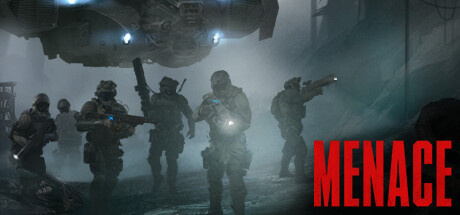Vehicle vs. Mechs
Before diving into the actual damage mechanics, we should take a step back and look at the different types of vehicles in the game. While there are various types within each category, the biggest difference lies between vehicles and walkers.
Vehicles include any machine that uses tracks, wheels, or similar to propel itself forward.
Mechs use any number, mainly two, of legs to traverse the battlefield.
Vehicles tend to be heavier and thus more resilient to enemy fire, while most mechs have the advantage of sporting two weapon slots that can carry additional firepower. Vehicles also have directional armour values, while mechs have the same armour facing all directions. Vehicles are usually much heavier armoured in the front, less so on the sides, and the least in the back.
Differences in Movement
Due to their strong inertia, vehicles are faster when moving in straight lines, especially when additionally taking advantage of roads. A vehicle on a straight road will move across a big portion of the map in one turn.
However, the big forward inertia and speed make it hard to take quick turns. Driving around corners or obstacles requires vehicles to slow down significantly to prevent losing control. In the game, turning a vehicle costs a substantial amount of action points, so good planning ahead is needed.
Ensuring the vehicle has a straight and obstacle-free path of approach is crucial to maximizing its speed.
While not reaching these high speeds, mechs or walkers have the advantage of being able to turn on the spot. They do not need to pay any additional AP to change their facing or direction; this makes them very manoeuvrable and flexible on the battlefield.
While vehicles excel at moving through open terrain, mechs or walkers are king in confined spaces like settlements. Vehicles can become bogged down very quickly when navigating narrow roads and alleys. Enemies can also quickly flank them and attack their flank or rear for maximum effect.
Mechs or walkers are highly maneuverable in settlements and move just like infantry units, allowing them to quickly change positions, face any emerging threat, and react swiftly to changes on the battlefield. They also do not have a weak spot, such as low rear armor.

Defects and Hitpoints
Going forth, we will use vehicles for all vehicles and mechs to keep things simple. All vehicles have hitpoints, armour, and armour durability just like an infantry unit.
Of course, the values for vehicles are usually much, much higher. They are mostly immune to small or even medium arms fire, and it takes serious anti-vehicle weapons to put a dent in them.
All vehicles have certain thresholds when losing HP that can cause a so-called “defect” to appear. These defects are very similar to injuries in Battle Brothers and have various effects and severity.

At 25% hitpoints lost, a vehicle suffers a light defect. These are usually easy to play around with or wear off quickly. Examples of light defects are a small fire, overloaded controls that stun the vehicle for one turn, or light weapon damage that can cause the attached weapons to malfunction.
At 50% hitpoints lost, a vehicle suffers a medium defect. These are more serious than light defects and can put a huge dent in combat effectiveness. Examples can be a medium fire that keeps damaging the vehicle until it is put out, engine damage that increases movement costs, or damaged optics that reduce view range, detection, and accuracy.
Finally, at 75% hitpoints lost, a heavy defect is suffered. These are always serious and spell the end of a vehicle in many cases. This can be a large fire that quickly destroys a vehicle, or a completely destroyed weapon system or engine, effectively immobilizing a vehicle. A heavy defect can also be a critical hit, instantly evaporating the vehicle in a massive explosion.
There are way more defects in addition to those mentioned above.
Unique Defects
In addition to the generic defects, each vehicle type and even each unique weapon can have defects attached to it.
EMP Discharge
An EMP weapon can suffer an accidental discharge, effectively stunning all machines around it.

Rocket Cookoff
A vehicle armed with rockets might shoot off rockets randomly when getting destroyed. Better not be near this one when it blows up!

Flame Leak
Carrying around large fuel tanks is not without risk in a battle zone. A unit equipped with a heavy flamethrower might get its fuel lines punched and leave a trail of fire behind it.

There are many more defects like this in the game, and we will take care to add more. Each vehicle and weapon should feel unique and immersive, including what happens when it gets blown up.
Engage, Explore, and Stay Informed
That's it for now! We'll see you next Friday.
You can find us on Discord, BlueSky, Twitter, YouTube, Facebook, and Reddit for discussions, updates, and feedback. You can also subscribe to our monthly MENACE newsletter on our website — just scroll to the bottom of the page to sign up.
https://store.steampowered.com/app/2432860/MENACE/
